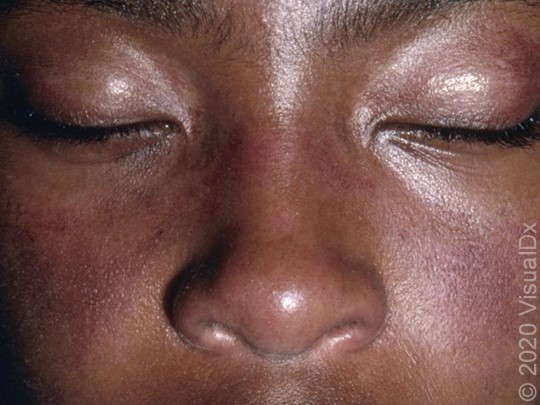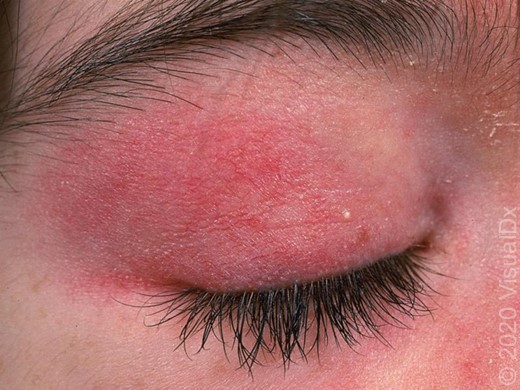Every person deserves a timely and accurate medical diagnosis, yet between 15 and 20 percent of all diagnoses are wrong.1 While this is an issue that affects all individuals, people of color face even more disparities: When it comes to skin cancer, morbidity and mortality are disproportionately higher among African American and Hispanic individuals.2
Representation for All
Training doctors to reduce their own biases by recognizing how rashes present on darker skin types is key to reducing diagnostic error, yet professional resources often do not meet the diagnostic needs of people with deeply pigmented skin. Dermatology textbooks and atlases underrepresent disease presentation in people of color and often fail to cover conditions across the spectrum of severity in those populations.
A recent study published in The Journal of the American Academy of Dermatology (JAAD) analyzed the images found in educational resources, both printed and digital. Of the 15,445 images across all resources, a mere 19.5% were of darker skin. Online resources had a greater representation of dark skin images at 22.1%, compared to printed texts at 10.3%.3
As a result of this dearth of diverse medical images seen during medical school, students do not feel confident in their abilities to recognize and treat skin diseases in patients with darker skin phototypes.4
Recognizing skin inflammation or infection in patients with darker skin can be challenging, as the differences between healthy and affected skin can be subtler. For instance, erythema does not appear red or pink in people with darker skin phototypes; instead, the skin may appear brown or violaceous.
See, for example, the difference in presentation of dermatomyositis in dark and light skin in the photos below. In dark skin, the inflammation of dermatomyositis is subtler, has a brown to purple color, and thus does not look like typical inflammation. In light skin, the inflammation due to dermatomyositis is easily seen as red or pink skin.


If clinicians haven’t seen examples on darker skin, they may not be able to give an accurate diagnosis. The impact of this lack of training can be devastating. “When you think about skin, people often think about acne and warts and maybe skin cancer,” says Art Papier, MD, president and CEO of VisualDx. “But actually, the skin is the place where you might first diagnose meningitis in the blood, or you might first make the recognition of Lyme disease or other infectious disease.”
Reducing Bias Through Visual Diagnosis
Medical images play a crucial role in educating students, residents, and even seasoned providers; they also capture a history and tell a story. VisualDx boasts one of the world’s largest medical image collections and the most diverse; 28.5% of the collection reflects darker skin, according to the recent JAAD study.
The vast repository of images of darker skin types in VisualDx is not only crucial for health professionals for diagnosis and treatment, but it is also critical for their patients. Using VisualDx’s unique image filter tool, clinicians can quickly narrow down images to view those that closely match the patient’s skin tone, right at the point of care. The ability to show a patient multiple images of their diagnosis as it presents in a skin type resembling their pigmentation builds confidence and trust in the provider. Using pictures to more effectively connect the patient and the physician is an essential part of exemplary medicine.
“I think the more people that are using VisualDx, the better the care we can provide,” said Dr. Papier. VisualDx plays an important role in improving health care in people of color because it’s not just showing a classic image on light skin, Papier added. “We are showing how things look differently on dark skin, and I think that’s very valuable for improving the care overall.”
Medicine is complex, and we need tools to meet that complexity to help the physician do a better job.
To learn more about VisualDx’s diversity efforts, visit www.visualdx.com/diversity. Interested in integrating VisualDx into your MEDENT EHR? Contact partners@visualdx.com to get started.
References
- National Academy of Sciences 2015 Report
- Dermatologic health disparities PMID: 22117867
- Alvarado SM, Feng H, Representation of dark skin images of common dermatologic conditions in educational resources: a cross-sectional analysis, JAAD. Published June 10, 2020.
- Buster KJ, Yang L, Elmets CA. Are dermatologists confident in treating skin disease in African-Americans?; J Invest Dermatol Meeting Abstracts; 2011; abstract 235.)


Comments are closed